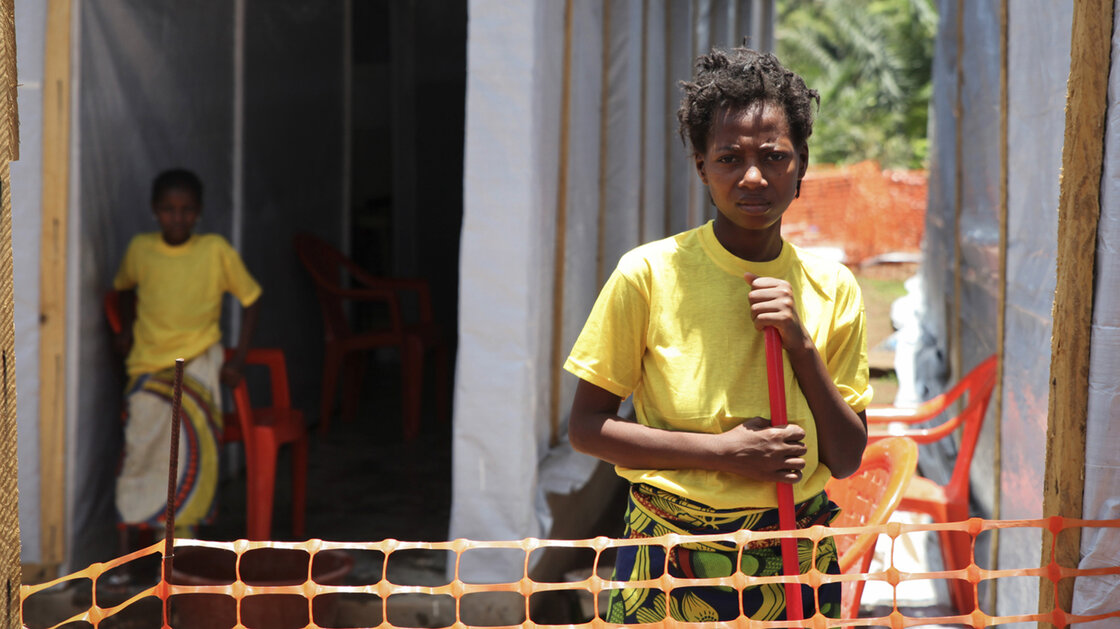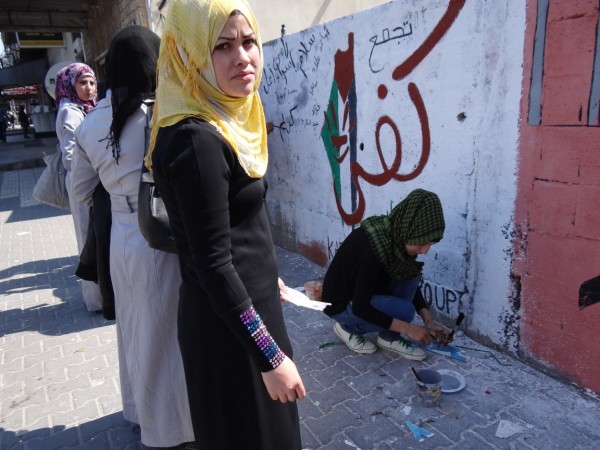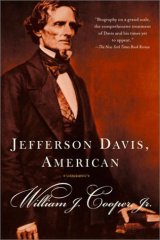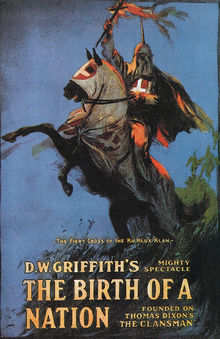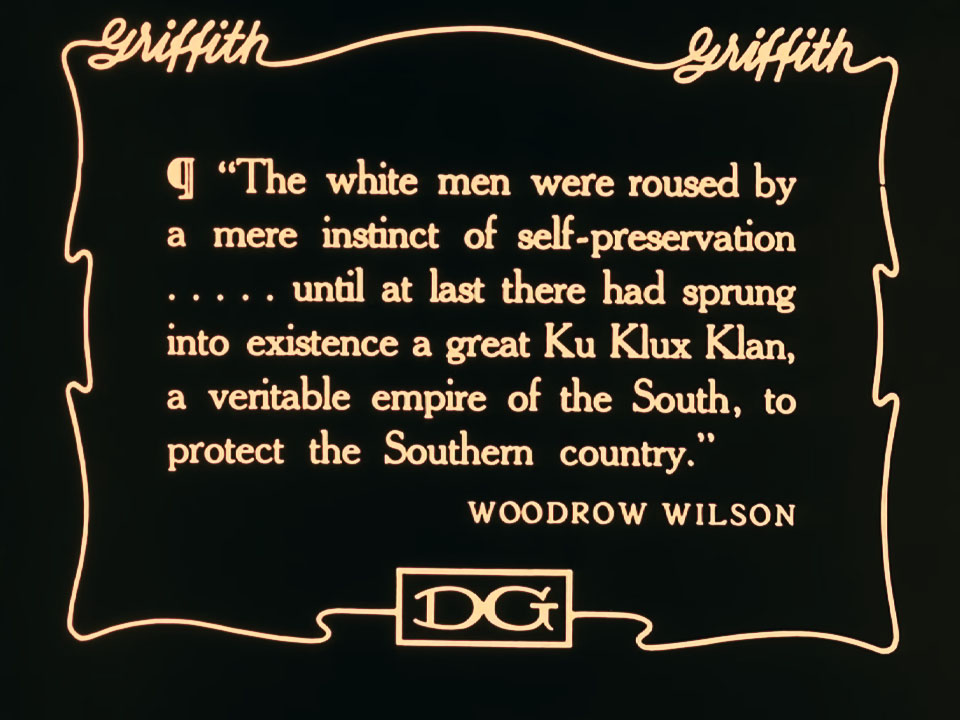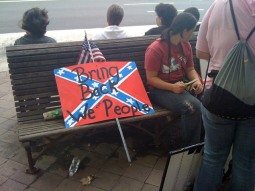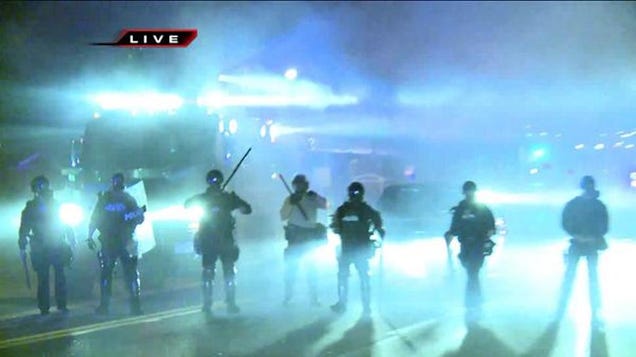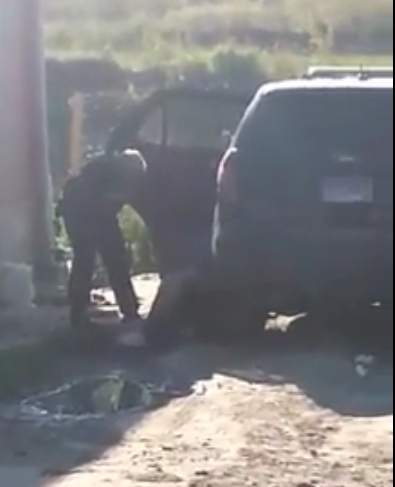Okay, I guess I am just not all that cool. I know I am not all that intellectual. Still I do read a whole lot, so how come I just can't get the deal with James Ellroy? I mean, I long ago decided to read the Underworld USA trilogy. Made my way through book one. Eventually started book two...several times...but I just cannot get past all the white supremacist, sexist, patriarchal, Jew hating, Mexican hating, homophobic rhetoric and portrayals which fill these books. I know, I know, it's supposed to be some sort of a literary device meant to shock the likes of me and all that. Well, I guess it works. What I can't figure out is where does one draw the line. When does all the bigotry exemplified by the characters actually exemplify the bigotry of the author? I mean, who thinks up and writes every racial slur imaginable...and to what end.
The story lines of these three books are intriguing. The Weekly Standard says,
The books focus on the malign role played in that history by organized crime, rogue elements of the CIA, and (above all) J. Edgar Hoover, who is the central character of the trilogy.
All three novels explore vicious American racism—Mafia chieftains and J. Edgar Hoover being among the most vicious racists. All three novels indicate that American involvement in undeveloped countries (Cuba in the first book, Vietnam in the second, and Haiti and the Dominican Republic in the third) consists largely of support for Third World dictators who brutalize and oppress their impoverished subjects. Ellroy does not romanticize communism, but all of the books’ anti-communists are either far-right fanatics or greedy businessmen. Admirable, principled opponents of Communism on moral grounds are nowhere to be found.
Finally, the books embrace conspiracy theorizing in a big way. American Tabloid culminates in the assassination of JFK—murdered at the behest of organized crime, which was angered by Castro’s expropriation of its Cuban casinos (and then by Kennedy’s unwillingness to continue to try to oust Castro after the failure of the Bay of Pigs invasion), and by Robert Kennedy’s crusade against organized crime. (The assassination is given tacit permission by J. Edgar Hoover, who refers to it obliquely as a measure “of great boldness.” Lee Harvey Oswald was a fall guy; the real assassin, we learn in the next volume, was a rightwing French extremist.)
Mutatis mutandis, the next volume, The Cold Six Thousand, tells a similar story. This book culminates with the assassinations of Martin Luther King and Robert Kennedy. Both of these assassinations again receive tacit permission from Hoover: King’s assassination is an offshoot of an FBI campaign (orchestrated by Hoover) to discredit the civil rights leader; Mafia leaders are responsible for the RFK—as for the JFK—hit, because they know of (and fear) his intention to fight organized crime if he is elected president in 1968. (James Earl Ray and Sirhan Sirhan are, like Oswald, patsies, made use of by the actual assassins to obscure their own guilt.)...
When you read the back cover you are sure you are going to want to read them. The writing itself is dark, evocative, noirish, and all that. Ellroy proclaims himself to be sort of a right wing Marxist...and I mean right wing. What the hell does that mean.
I understand at the end of book three if I ever get there, we come to "love" some female lefty or something. Boy, there is a whole lot of shit to plow through before we get there.
Again, every time I pick it up and start reading book two, I feel dirty, and I don't mean nasty. I mean slimed.
Did I mention the violence, the violence directed at women, at blacks, at just about anyone really? I am not afraid of violence in books, in TV, in movies, in life, but it gets old and it gets sickening after a while.
They tell me Ellroy has changed his perspective from his youth as a neo nazi loving a-hole via a period one could call right wing talk radio ideology to...well, I don't know what.
Ellroy likes to describe himself as a Tory. Meaningless...
But then there is the "other" Ellroy, the one who in one interview stated correctly that,
America itself as an entity was founded on a bedrock of racism, slavery, land-grabs, and the slaughter of the indigenous people.
Can't argue with that.
But where is any hint of another possible world? Nowhere, that's where.
Some fellow at the Straight Dope writes:
I've read a bunch of James Ellroy's novels, including the L.A. quartet, American Tabloid, The Cold Six Thousand and a couple of others. I find his writing to be extremely intelligent, densely plotted, and remarkably thought provoking. I think that American Tabloid is the best novel I have ever read about the JFK assassination.
However, one thing disturbs me about his work, and that is the rampant racism of most of his characters, even his ostensible protagonists. Now I understand that he is depicting the thought processes of specific characters set during a specific era (usually cops in the 1950's) and I don't confuse the attitudes of a character with the attitude of the author, but I have also noticed that Ellroy never seems to depict any black character who is not a pimp, a drug addict, a rapist or a murderer. Granted, he is portraying seedy underworlds, but wouldn't at least ONE good black person pop up once in a while, even in this milieu.
The same goes for homosexuals in his novels. They are routinely sneered at by his protagonists and are often portrayed as amoral.
The poor guy likes Ellroy's books and wants to know if he should feel guilty. I understand the feeling. I wanted to like the books, but that went away the more I read. I wonder how I would feel if I were an African American reading this stuff. I know how I feel when I read the Jew hating parts, disgusted, appalled...not good. And the Jew hating is nothing compared to the white supremacy.
Mike Riggs writes at ArtsDesk,
Ellroy has professed a love of racist language, and in (a) video of a pre-election lunch with Rose McGowan and Bruce Wagner, the crime novelist says that Obama "looks like a lemur."
That says to me, at least that Ellroy's actual views on race deserve as much attention as his fictional depictions of race.
I think Ellroy is obsessed with himself. I think the man believes he is a legend.
Mike Davis thinks he is something else. In the Chicago Review of Books Davis wrote:
Now let me tell you who I can’t stand, and to top the list I would put that neo-Nazi in American writing who is James Ellroy… And to begin with he’s not a good writer. He’s a kind of methamphetamine caricature of Raymond Chandler… Each of his books is practically a Mein Kampf, it’s anti-communistic, it’s anti-Mexican, and it’s racist.
That is what it seems like to me, too.
Here is something from an interview Ron Hogan did with James Ellroy:
RH: When I read critics of your work, they often react: "Oh my god, he's writing these horrible homophobic, racist, misogynist, psychopathic books." And I'm thinking: "No, he's not writing from his perspective. He's getting into the heads of these ugly characters." You're not endorsing their world by any means.
JE: I think I know what's behind this, especially some of the views expressed by Mike Davis. These are fully rounded characters, and the racism and homophobia are casual attriubutes, not defining characteristics. These are not lynchers or gaybashers, toadies of the corrupt system. When you have characters that the reader empathizes with, who are carrying the story, saying "nigger" and "faggot" and "spic", it puts people off. Which is fine. I would like to provoke ambiguous responses in my readers. That's what I want. There's part of me that would really like to be one of Dudley Smith's goons and go back and beat up some jazz musicians, and there's part of me that's just appalled.
What is your take on that? Mine says, I do not want to be a reader who "... empathizes with (charachters), who are carrying the story, saying "nigger" and "faggot" and "spic"...," Mr. Ellroy. There is no part of me that wants to beat up some jazz musicians, Mr. Ellroy.
Ellroy gets away with his schtick because, I think, liberals lap it up to show how "cool" they really are. Ellroy, meanwhile, laughs his way to the bank, his money made on his "talent" to write bigotry. I think he is a gasbag. I think he exposes himself as a racist yet again during interview found on the Venetian Vase conducted by Steve Powell when asked about his opinions on the Rodney King case.
Interviewer: Would you say that current, or moderately current LAPD scandals like Rodney King or O.J. Simpson are more beyond the pale compared to the good work the LAPD does in the majority?
Ellroy: Well a couple of things. First of all, I wouldn’t call O.J. Simpson a scandal, it’s just, it’s not even a botched murder case—it’s a bad acquittal. And the second thing, Rampart wasn’t much of a scandal when truly dissected. Same thing with Rodney King if you see the entire three-minute tape. The fifty-six hammer blows that put Rodney on the ground, and the contact slash don’t look good, but moment to moment the entire three minute tape leads me to say, and I realize this is revolutionary, I don’t think they did anything wrong. There’s a moment when one of the policeman, and it might have been interestingly enough a man named Powell, kicked Rodney King in the head, which was the only out-of-line and out of policy thing that they did. Yeah he attacked Stacy Koon. The other people in the car were led to safety. He kept attacking: he took a taser, he kept getting up, getting up, getting up. He’s six foot five, two hundred and fifty pounds, and on angeldust, and you don’t engage people like that in one-on-one fights. And I think it was an aesthetic call that people made: they could either see this in the context of white racism and police corruption or overall police misconduct, or they could see it in a more localized context, which in this case, I think, is also a more broader context—that these are the exigent factors of police work, ad hoc, day to day. And you can’t let angeldust-addled shitbergs drive around at one hundred and ten miles an hour on the freeway, where they will kill people: interdict and suppress them. It doesn’t look good, the footage a million people have seen, many millions of people have seen. In a larger context, it reveals itself to be something entirely different, and so pointing to these things, and Rampart’s a crock of shit, and accepting them as historical fact is very dangerous and specious. And so what I’m morally obligated to do with interviewers is try to give them a different view of these speciously alleged facts.
Here is what Ellroy had to say about the movie "Panther" about the Black Panthers.
I believe it is stupid. I think the movie Panther is a joke. They were a bunch of dope-dealing idiot thugs, the Panthers themselves. And the cops were the relative good guys in that whole operation.
Or from the same interview with Robert Birnbaum, we have this nugget,
RB: Read a lot?
JE: No. I think a lot. I listen to classical music. I exercise. I watch boxing on TV and go to the fights occasionally. The only television show I watch is “The O’Reilly Factor.” I like O’Reilly. I profiled him for GQ.
RB: What do you think about his political ambitions?
JE: Let me put it this way. If Bill O’Reilly ever decides to run for office, I will reach into my checkbook make the maximum allowable individual campaign contribution and assist him in his quest for public office to the limits of my ability. He is not a Republican and is no where near as right-wing as most people think he is. He shares my hatred and moral concerns about the death penalty among other things. And he is a pro-environment guy.
I could go on and on with this bit of Scission Cultural Monday on Wednesday, but I have said enough. Surely you understand my problem with Ellroy, his works, his supporters, those who fawn over him.
Me, I wouldn't give this blowhard the time of day.
I've answered my "question" from up top. Yeah, I think Ellroy is a bigoted turd hiding behind a "literary" veneer.
But what do I know? I'm just some guy who lives in Kansas City and as I recently learned after reading the blog of some "old friends" from California who visited the area a few weeks back, that pretty much makes me just some yokel.
But, wait, Ellroy lives here in the metro area, too. In fact, it is only a few miles from my home in the city itself to his in the wealthy suburb of Johnson County, Kansas.
All that said, like here is a different view, which I don't get at all, from the Jacobin.
A RED WITH AN FBI BADGE
by Peter Berard
So James Ellroy intones at the end of a soliloquy opening American Tabloid, the first volume in the Underworld USA trilogy. The bad men he hugs close include the Mafia, J. Edgar Hoover, assorted politicos, and tycoons like Howard Hughes. The novels illuminate a conspiratorial hidden history of the United States from just before the Cuban Revolution in 1959 to the Watergate break-ins in 1972, told across two thousand pages in Ellroy’s signature style: strings of tight, telegraphic phrases interspersed with police-report exposition and Grand-Guignol violence. The style — experimented with in his earlier work, but perfected in Underworld USA and his first memoir, My Dark Places — is innovative enough to be worth the price of admission for anyone who values literary invention.
Anticommunism — as an ethos and a way of life, more than as an idea — drives the action of the books. Ellroy’s performance as a public figure over the years has sometimes verged on talk-radio-style right-wing ranting, and his fiction is at times calculating in its violation of liberal sensitivities through racial stereotyping.
Yet readers who picked up the Underworld trilogy as the novels appeared between 1995 and 2009 found themselves — after nearly two thousand pages, and in the wake of more bloodshed perpetrated by assorted “bad men” later than anyone would want to remember — reading the elegy for an elusive American Communist femme fatale that ends Blood’s a Rover, the final volume.
This is a major transition: the consequence of a rigorous pursuit of knowledge of one’s self and of one’s world, as undertaken by a strange, conflicted, highly talented man. In City of Quartz, Mike Davis wrote of Ellroy that “in his pitch blackness there is no light left to cast shadows and evil becomes a forensic banality.” There is a grain of truth in Davis’s criticism, even if his subsequent characterization of Ellroy as “a neo-Nazi in American writing” goes overboard. But Ellroy is canny and honest enough with his darkness — and willing to allow in the light of historical inquiry, if not of morality — to be able to say something important.
“Geography is destiny,” Ellroy occasionally likes to proclaim in his public appearances and interviews, an interesting position for a man who has also claimed to have never looked at an atlas until middle age, when his second wife bought him one. But it rings true. He has a nose for the geography of power. The power structure that the characters work for is an array of fiefdoms, a “democratic feudalism,” to use Corey Robin’s term, that makes the Holy Roman Empire look sane by comparison. Ellroy’s America is Charles Portis’ “pelagic America,” the land-sea at the heart of North America where the odds and ends of Europe, with the help of a little capital and a lot of forced labor, could make society in its own image. In Underworld USA, this is a welter of parochial mini-worlds, governed by sleazy thugs and stitched together by a skein of national institutions. (Ellroy and Portis, whether they want to or not, definitively rebuke Burke’s vision of small “organic” communities.) This is the nexus between the Mafia and the corporate world that takes the people’s money, the police forces headed by Hoover’s FBI that monitors them, and mass entertainment that keeps them pacified and spending.
These forces also drive pelagic Americans into the cities, where their various hatreds rub up against each other. Underworld USA lingers on Los Angeles, Las Vegas, and Miami, cities where the management of arriviste rural Americans through violence, segregation, bread, and circuses was turned into an art. Like Ellroy’s parents, most of his viewpoint characters are middle Americans who came to cities. Dwight Holly, Wayne Tedrow, and Kemper Boyd are the sons of pelagic nobility (Indiana Klansmen, Nevada Mormons, and Tennessee aristocrats, respectively — and Ellroy himself might be the last American to actually give a damn about being of WASP descent, as opposed to a generic whiteness). Pete Bondurant comes to Los Angeles from perhaps the most isolated part of prewar North America: rural Quebec. Perhaps because of this, Bondurant, the terrifying animating force of the first two books, is clearest on what anticommunism is about: “anticommunism is good for business.” J. Edgar Hoover, overseeing the whole thing like a terrifying cross between Gollum and Sauron, is a good small-town Indiana boy himself. The Mob figures, though Italian and Jewish, speak the same language of big money and small, personal domination as do the Mormon bigwigs with whom they hobnob in Las Vegas. The only figures in the book that don’t — Bobby Kennedy (Jack could fake the same noblesse), the blue-blooded CIA men, French mercenaries, and towards the end, a cabal of those rare birds, effective American communists — give off a faint otherworldly aura.
This, then, is the “Free World.” The actions taken to uphold it fall under the rubric of anticommunism. “Anticommunism makes strange bedfellows,” J. Edgar Hoover says early in American Tabloid, and it’s the consequences of these strange couplings that drive the action in the books. Anticommunism in Underworld USA isn’t a matter of ideology or geopolitics. White American leftists (for the most part — more on this below) figure as harmless and well-meaning; Soviets don’t figure at all. Anticommunism is about keeping the suckers fat, ignorant, and happy, and their masters — those at the nexus of organized crime, politics, and the corporate world — secure.
Some communists, like the Cubans, threaten the system directly by cutting off Mafia and United Fruit profits. That said, most forces targeted by the anticommunist strange bedfellows — the civil rights movement, student radicals, those liberals who believe enough to get in the way — threaten the system not monetarily but ontologically: by attempting to make it kinder, gentler, less ignorant. They would disrupt the existence epitomized by the brilliantly nauseating scenes Ellroy depicts of Teamsters and those other parts of the working class favored by military Keynesianism enjoying their idea of paradise: all slot machines, cigars, booze, and prostitutes, with cheap lounge acts affirming — over and over again in leering, unsubtle terms — the white working man’s whiteness and masculinity. Racism, sexism, violence, sleaze, and chintz are not by-products of the system: they are the system, they are what make it worthwhile. They are what bound pelagic America into a superpower; the New Deal, the Atlantic Charter, and Fordism are incidental, or necessary but banal, conditions of existence.
Most of the protagonists in Underworld USA affect a superiority to the system they protect. The masses enjoying the show are dismissed as “geeks,” and most of the masters — gauche Sam Giancana, insane Howard Hughes, closeted voyeur Hoover — are depicted as little better. Partial though they are to posh hotel suites and drugs, Ellroy’s heroes aren’t in it for the money. The terror they wreak is its own end, as crucial to their sense of self as the vile and open racism of their society is to that society’s functioning. Pete Bondurant is constantly violently putting things in order: tabloid magazines, paramilitary camps, taxi-services-cum-crime-rings. This order consists of keeping races and genders separate, unequal, but functioning together, typically to make money via blackmail and violence. Bondurant is personally invested in this order, and the way in which his systems need the disorderly — black people and “geeks,” Cubans who just can’t seem to run a cab stand properly, the list goes on — to function seems to rub his always-tender temper raw. Still, only geeks (like the Klansmen everyone holds their noses and works with) suggest eliminationist solutions. The system needs to be maintained, not overturned. The system’s violence needs to be applied to the nonviolent so that the capacity and will to use violence remains intact. It’s circular, but if conservatism has one truth, it’s that the circular exists and sometimes we need to cope with it. Rarely, one of Ellroy’s tough guys can opt out, when they meet the right woman and the violence gets a tad much for them, but the world can no more opt out of systemic violence than it could opt out of gravity.
Ellroy once criticized Raymond Chandler by saying that Chandler wrote the man he wished he was, where Dashiell Hammett — a Pinkerton thug-turned-Communist Party member — wrote the man he feared he was in fact. Turned back on its originator, that criticism works well in evaluating Ellroy’s characters. Stone killer Pete Bondurant, sly charmer Kemper Boyd, lantern-jawed enforcer Lyle Holly are all good characters that move the action along, the sorts of men Ellroy would have liked to be. Don Crutchfield is a more honest character, closely reflecting Ellroy himself: an LA kid with a missing mom and a wino dad, spurned by nice girls and hippie girls alike, scared, resentful, obsessive. From there, the progression from peeping tom to cop groupie to junior private snoop to right-wing thug-in-training seems wholly natural. Crutchfield, before getting in with president killers and coup plotters, seems to be drawn from Ellroy’ own experience; his mother was murdered (a case still unsolved) when he was a child and he, too, snooped and perved his way around 1960s Los Angeles. Crutchfield is the opening for Ellroy’s real-life vulnerabilities to come through into his written work.
Womankind exists at the center of Ellroy’s universe of men. Ellroy has called himself a romantic, seemingly meaning a mash-up of two senses of the word: philosophical romanticism, with its disavowal of formal rationality, and romantic love as thought of by twentieth-century Americans. By using romantic love as a deus ex machina, redeeming racist thugs with body counts in the triple digits, Ellroy is both copping out and being entirely true to himself and his philosophy; his goals are not ours. Those viewpoint characters who do not acquire a true female love die violently and without any real redemption. The love of a good woman allows a few characters to get away from the violence altogether, and some to die in a state of grace.
As it turns out, a particular kind of love does most of the redeeming in Blood’s a Rover, the last and most compelling of the trilogy: the love of leftist women. The plot of Blood’s a Rover is a fascinating fractal complex mess, as complicated as the rest of the trilogy put together, but at the center lies the sort of Red conspiracy that might have justified some of the anticommunist violence that motivated the action in the rest of the book. However, it’s clear Ellroy admires these communists, and so, eventually, do his characters.
At the center of the action is a confederacy of femme fatales led by the enigmatic Joan Rosen Klein, and Jack Leahy, a red-diaper baby who wormed his way into the FBI directly under Hoover’s nose. Jack’s father “was a Red with an FBI badge. He was grooming Jack to become a cop revolutionary.” Both Jack and Joan are veterans of an endless struggle, and have acquired the scars and gravitas to distinguish themselves from the callow liberals Ellroy complains about in fiction and in interviews. Joan and other left-leaning female figures are the engines of most of the redemption the series has to offer. Love for Joan makes Dwight Holly turn on Hoover, love for a black woman makes Wayne Tedrow into an anti-imperialist guerrilla. Don Crutchfield, the character closest to the author, delivers his elegy decades after the events in the trilogy, when he is a successful private detective, but still searching for the elusive Joan (as Ellroy searched for his mother in My Dark Places). Ellroy famously disbelieves in closure. Joan doesn’t bring closure, but strong women bring redemption throughout Ellroy’s work — in Crutchfield’s case, the pursuit of her, rather than her actual presence.
It would be a mistake to make more out of this than it is. Romantic love and violence burnout as ethical answers to the world is obviously insufficient, though if such forces can turn right-wing thugs the way Ellroy seems to think they can, more power to them. The closest Ellroy has come to a real statement of political intent is his self-description as a “Tory mystic.” Elsewhere he has described himself as a mixture of Marxist and conservative. What these have in common is a rejection of liberalism and the bourgeoisie, for better and for worse. This is in keeping with Ellroy’s love of shock (and schlock) and his deeply pessimistic worldview. He’s been at it again recently as his next book nears print, ranting against Obama, hipsters, “rock-and-rollers” (the man is aging) and making much of his Tory leanings.
Some of this elicits yawns and some of it chuckles, but unlike other right-left straddling provocateurs (Christopher Hitchens comes to mind), Ellroy’s work continues to impress and improve, both in terms of his craft and in terms of clarity and humanity of vision. Compare Underworld USA with the earlier works in the LA Quartet (most famous for LA Confidential). While good reads, the novels that comprise the quartet — The Black Dahlia, The Big Nowhere, LA Confidential, and White Jazz — were much more conventional works. Ellroy engaged in significant historical research for these novels — his 1950s Los Angeles feels gruesomely real — but he did not surrender himself to it as fully as he did later on. Or perhaps the history of LA simply brought out something different in him than did the history of the United States.
In the LA Quartet, leftists are pathetic, not worth anyone’s time — neither that of the perpetrators of the Red Scare or of those the leftists would purportedly help. In fact, there’s even a leftist femme fatale in The Big Nowhere, but she’s the opposite of Joan — a fake leftist, a rich girl playing Red and seeking authenticity by sleeping with Mexican men, a spiteful caricature in a series full of them, but more memorable for the seemingly deeply-felt resentment behind it:
The woman hated her father, screwed Mexicans to earn his wrath, had a crush on her father and got her white lefty consorts to dress stuffed-shirt traditional like him — so she could tear off their clothes and make a game of humiliating paternal surrogates. She hated her father’s money and political connections, raped his bank accounts to lavish gifts on men whose politics the old man despised; she went to tether’s end on booze, opiates and sex, found causes to do penance with and fashioned herself into an exemplary leftist Joan of Arc: organizing, planning, recruiting, financing with her own money and donations often secured from her own body.
All the same, this represents a step up for Ellroy from his real right-wing kook days (he was a supporter of the American Nazi Party at one point in his youth, according to his memoirs), but was still well within right-wing tough-guy shock jock territory. Glimmers of the writer he would become exist in the LA Quartet, but he was not there yet.
This development shows in Ellroy’s public persona, as well. He doesn’t gadfly as much as he once did; he’s toned down both his love for throwing around vile racist and sexist epithets and the ain’t-I-a-stinker justifications for doing so. His obsessive stalker quality can still make one’s skin crawl, but turned towards historical inquiry, it drove him to some actual truths: his understanding of what made anticommunism has truth to it that other (nicer, more formally educated) people would — and have, and do — miss.
The study of history made him a better writer and (somewhat) less of a troll in the bargain. Ignorant self-love was a key support for the white man’s hell-paradise seen in Underworld USA. Ellroy kicked out the prop of ignorance from his own persona in order to rhapsodize that world, and in so doing changed his perspective, and has followed that change to some fruitful and logical conclusions. That’s a decent first step for anyone.

